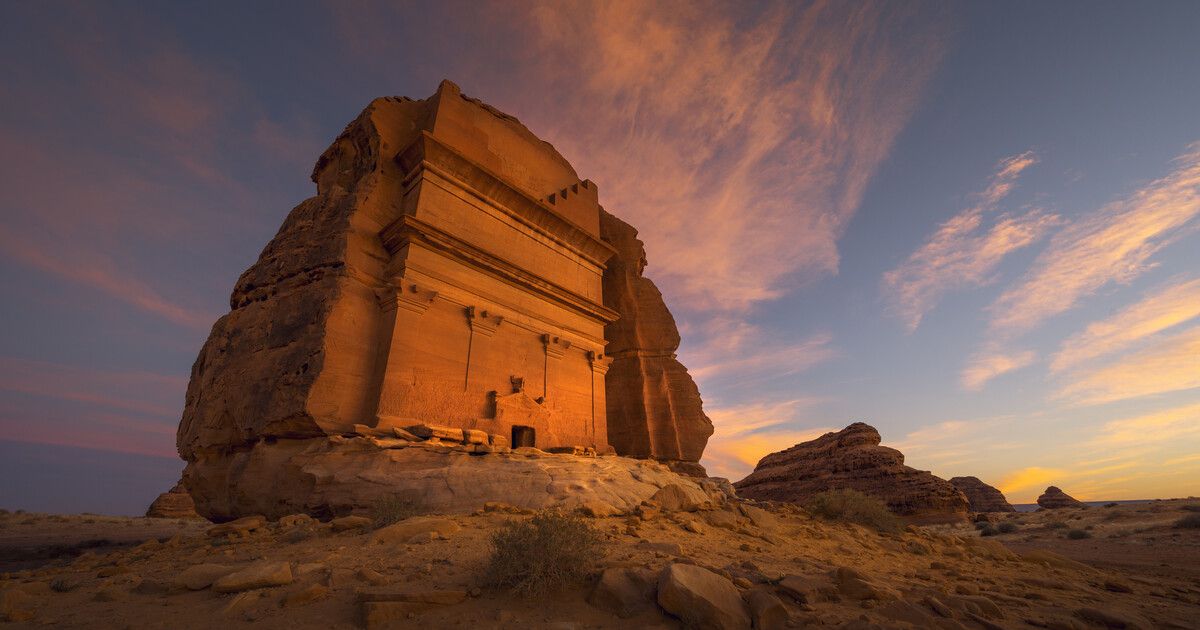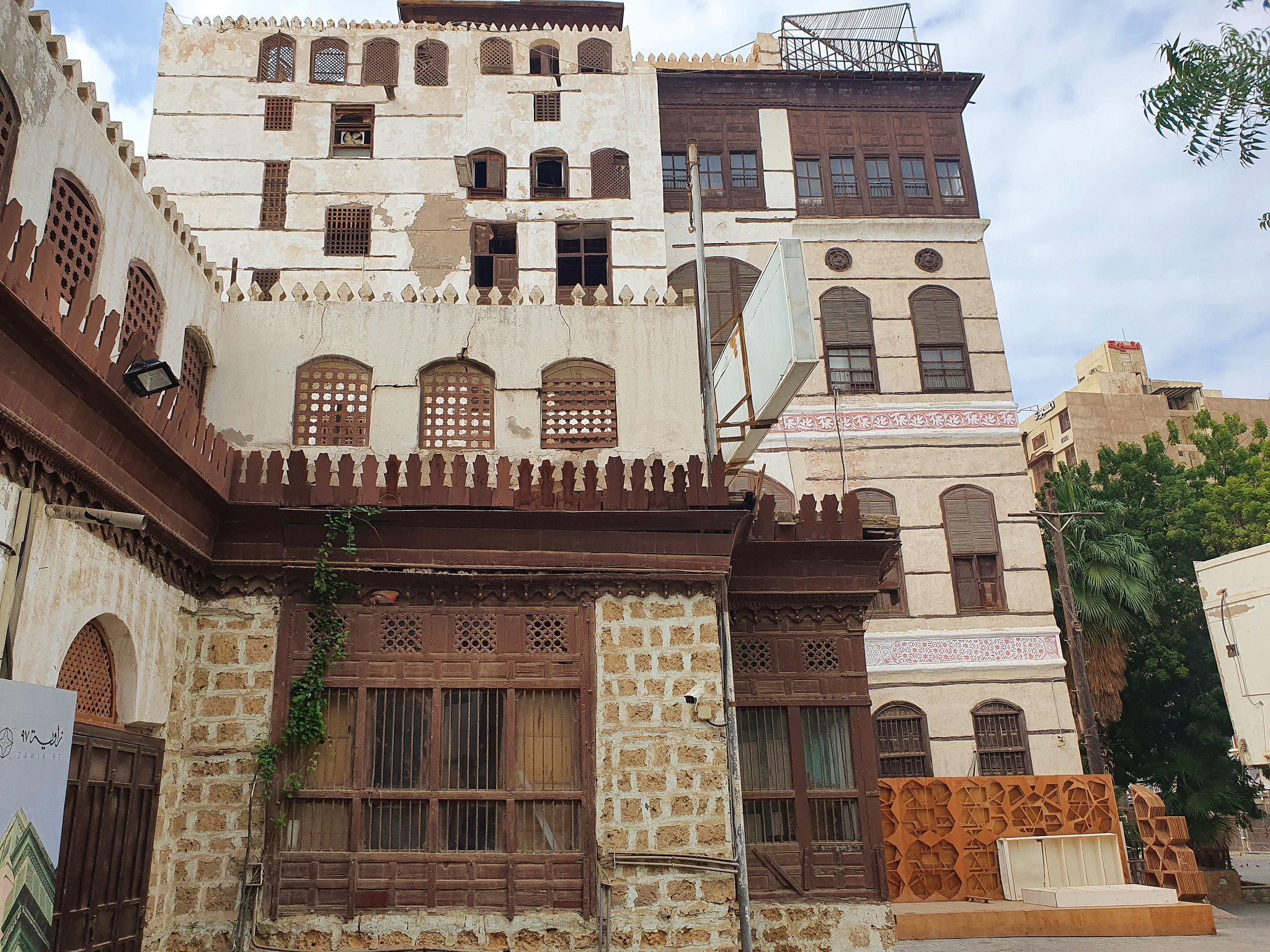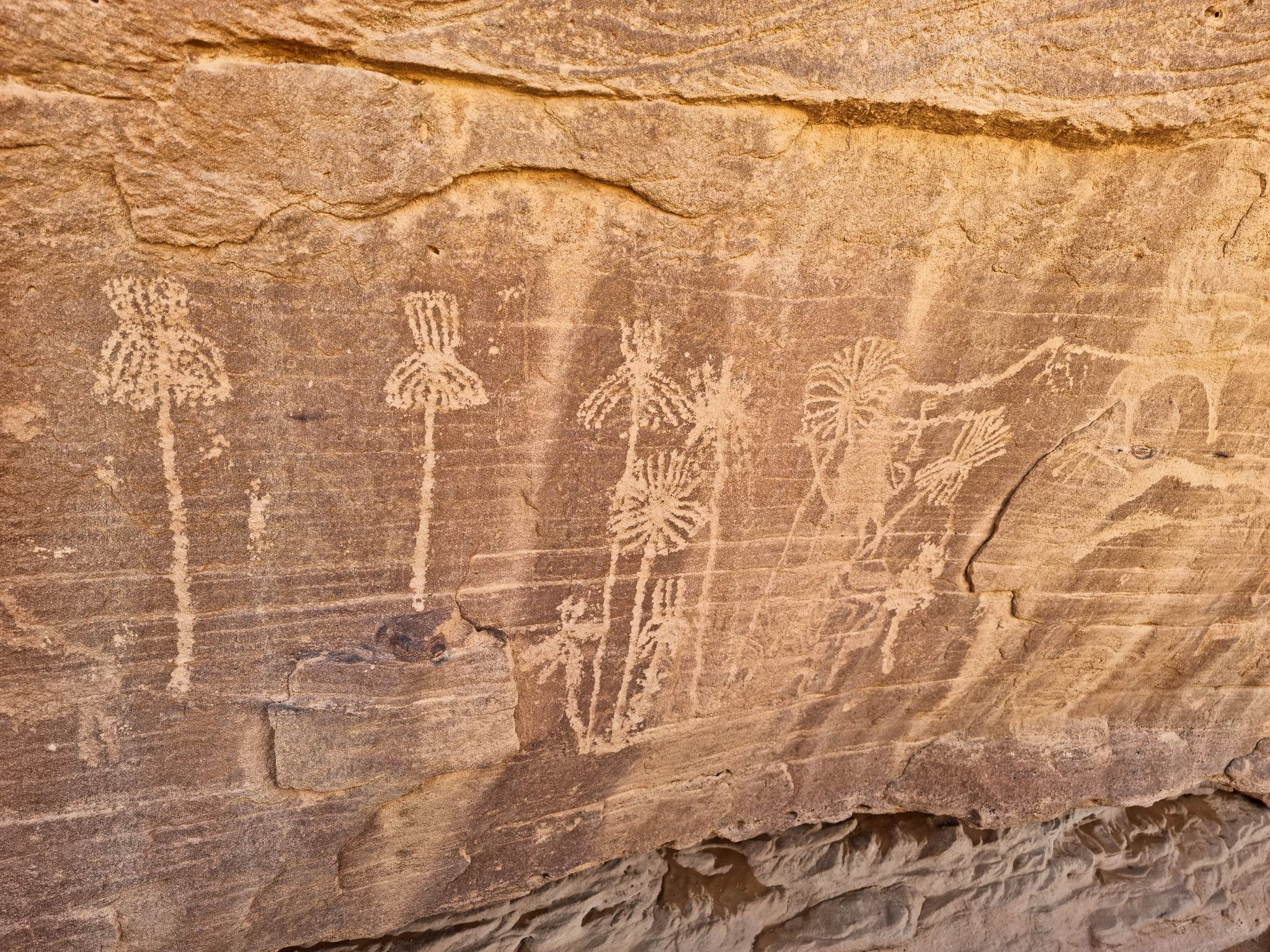Saudi Arabia has some of the top heritage spots in the world, and we appreciate its vibrant culture and history. Additionally, the country is home to six UNESCO World Heritage Sites that have "outstanding universal value." These locations offer an in-depth look into the ancient civilizations that existed in the Arabian Peninsula both before and after the advent of Islam.
The sites aid in comprehending the path of ancient civilizations and how they changed over time. The heritage sites are the top attractions in Saudi Arabia and are famous around the world, offering everything from rock art at Jubbah to the remnants of Nabataeans in Madain Saleh. These are very informative, so a walk to these sites is one of the best things to do in Saudi Arabia.
World Heritage Sites You Must Visit.
1) Madain Saleh, Al Madinah

The first Saudi spot to be recognized and popular as a UNESCO World Heritage Site is Madain Saleh, also known as Hegra or Al-Hijr, one of the top attractions in Saudi Arabia. The masons’ skill and quality at the time are showcased in the 111 tomb façades, which maintain clean surfaces and elaborate decorations on the entrances. The location is a superb illustration of the Nabataeans' mastery of design and comprehension of hydraulics.
The tomb facades have distinctive modeling and intricate carvings. At the summit, there is a central point from which two crowsteps ascend. A gate in the middle of the façade allows visitors to enter the tomb. The interior of the structure exhibits irregular sculpting in contrast to the sleekly completed façades.
The site is situated in the Al Hejaz region's Al Ula of Al Madinah. To get to Hegra, visitors can simply hire a private taxi from Al-Ula Airport or Madinah City. The Qasr al Farid, Nabataean inscriptions, Jebel Ithlib, and Qasr al Bint are the main attractions, so a visit to watch these beauties is one of the best things to do in Saudi Arabia. Since 2008, it has been recognized as Saudi Arabia's first World Heritage Site.The tomb facades have distinctive modeling and intricate carvings. At the summit, there is a central point from which two crowsteps ascend. A gate in the middle of the façade allows visitors to enter the tomb. The interior of the structure exhibits irregular sculpting in contrast to the sleekly completed façades.
he site is situated in the Al Hejaz region's Al Ula of Al Madinah. To get to Hegra, visitors can simply hire a private taxi from Al-Ula Airport or Madinah City. The Qasr al Farid, Nabataean inscriptions, Jebel Ithlib, and Qasr al Bint are the main attractions, so a visit to watch these beauties is one of the best things to do in Saudi Arabia. Since 2008, it has been recognized as Saudi Arabia's first World Heritage Site.
2) At-Turaif District
The At-Turaif District, constructed in the fifteenth century, exhibits the magnificent Najdi architectural style. The center of the Arabian Peninsula is the only place with this kind of architecture. In the 18th and 19th centuries, the area was a reputed center for religion and politics. The House of Saud's temporal dominance and the growth of the Salafiyya reform in Islam were both centered in At-Citadel.
On the fringe of the ad-Diriyah oasis, the site has an urban ensemble and the remains of multiple palaces. The area has not undergone modern development as it was abandoned for a long time. The site is located in the middle of the Arabian Peninsula, northwest of Riyadh.
The Saad Bin Saud Palace, Salwa Palace, At-Turaif Bath House, and Imam Mohammad Bin Saud Mosque are among the city's top attractions in Saudi Arabia. In 2010, the At Turaif remains were designated a World Heritage Site.
3) Historic Jeddah

In the seventh century AD, the Al Balad neighborhood of historic Jeddah became the main harbor for commerce routes coming from the Indian Ocean. It assisted in directing merchandise from all over the world toward Makkah. Muslims who arrived at the holy city by boat might also enter through the Gate of Makkah.
The town has developed into a hub for multiculturalism with a distinctive architectural heritage, which includes homes and buildings constructed in the late 19th century by the city's wealthy businessmen. According to some sources, the neighborhood began to develop doors and fences during the Portuguese campaign in Jeddah. To defend the city from invasions, the fences were built in the middle of the sixteenth century.
Historic Jeddah is located on the eastern shore of the Red Sea, 10 kilometers from the city center. One of the best things to do in Saudi Arabia is visit the local historic homes, souks, and Jeddah Roshan Tower. Since becoming a World Heritage Site in 2014, Historic Jeddah has celebrated its worldwide recognition.
4) Al-Ahsa Oasis

In the eastern Arabian Peninsula, the popular property called the Al-Ahsa Oasis is located as one of the top attractions in Saudi Arabia. It includes old buildings, drainage lakes, archaeological sites, gardens, springs, and wells. Al-Ahsa Oasis is a metaphor for the region's examples of steadily expanding human settlement. Historic wells, forts, canals, mosques, and other water management structures serve as evidence of the growth.
With 2.5 million date palms, it is the biggest oasis in the world. Enjoying these sites is one of the best things to do in Saudi Arabia. The oasis is found in the Al Ahsa region's Hofuf. Its top attractions include 12 cultural landscapes, antiquities, and springs. It was incorporated into the list of World Heritage Sites in 2018.
5) Rock Art

It is the fourth Saudi cultural landmark to be included on the UNESCO World Heritage List. The two main locations to enjoy watching rock artwork in a desert landscape are Jabal al-Major and Rat at Sunwaymas and Jabel Umm Sinman near Jubba. The location also had a lake at the base of the Umm Sinman hill range in the southern portion of the Great Nafud Desert.
In the past, the lake contributed to the growth of the neighborhood. Inscriptions and petroglyphs on the rocks at the site offer historical context. Only 124 kilometers in a south-westerly direction separate the Riyadh city center from the Rock Art in the Hail region. Jabal al-Major and Raat showcase a variety of inscriptions made by humans and animals dating back 10,000 years. These are some of the top attractions in Saudi Arabia that you shouldn’t miss in your life. Rock Art was recognized in 2015 as a World Heritage Site.
6) Hima Cultural Area

The Hima Cultural Area is home to an amusing collection of prehistoric rock paintings that depict the flora and animals, way of life, and hunting methods from 7,000 years ago. Travelers and troops who camped there over the ages, up to the late twentieth century, left a profusion of petroglyphs and rock inscriptions. The majority of these inscriptions are in excellent shape.
The Bi'r Im wells have been providing fresh water for at least 3,000 years. These are located along a significant ancient desert caravan route, close to the oldest known toll station. It is situated about 200 kilometers from the city of Najran in a mountainous and dry region. Old inscriptions and petroglyphs are the main draws, as well as the Well of Bir Im.
Since 2021, the cultural region has been recognized as a World Heritage Site. Islam, Saudi Arabia's past as a hub of trade, and Bedouin customs all had an impact on the country's culture. The World Heritage Sites in Saudi Arabia provide a window into the extensive history and ancient culture of the country. So, you must plan a visit to these spots as one of the best things to do in Saudi Arabia.












